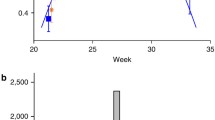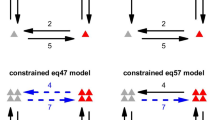Summary.
How warning colouration first appeared remains a disputed question in evolutionary biology. A density-dependent transition from crypsis to aposematism that occurs during phase change in the desert locust (Schistocerca gregaria) provides insight into the conditions under which acquiring warning colouration is adaptive. When crowded for only a few hours, solitarious locusts cease avoiding each other and actively aggregate. This occurs well before they acquire warning colouration. We show that accompanying this early behavioural gregarisation is a remarkable shift in feeding behaviour, in which solitarious insects switch from being deterred by a toxic plant alkaloid to feeding avidly upon foods containing it. A computer simulation shows how crypsis ceases to be effective as an anti-predator strategy when solitarious locusts are crowded, how chemical defence becomes essential as conspicuousness increases with local density, and how warning colouration becomes advantageous under these conditions. These findings provide empirical evidence for an adaptive route for the change from a cryptic edible phenotype to a brightly coloured toxic one.
Similar content being viewed by others
Author information
Authors and Affiliations
Corresponding author
Rights and permissions
About this article
Cite this article
Despland, E., Simpson, S.J. Surviving the change to warning colouration: density-dependent polyphenism suggests a route for the evolution of aposematism. Chemoecology 15, 69–75 (2005). https://doi.org/10.1007/s00049-005-0296-6
Received:
Accepted:
Issue Date:
DOI: https://doi.org/10.1007/s00049-005-0296-6




